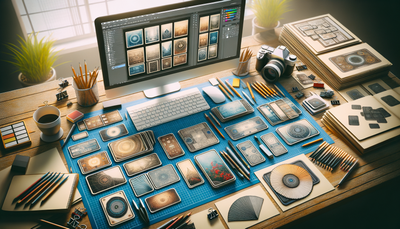Creating Animated Digital Cards: Tips and Techniques
Digital cards have become an increasingly popular way to share greetings, invitations, and other messages in our digital age. To make these cards stand out and capture recipients' attention, creators are turning to animation and interactivity. This guide explores various techniques for adding motion and engaging elements to digital cards, transforming them from static images into dynamic, memorable experiences. We'll delve into the world of animations, transitions, and interactive features that can elevate your digital card designs. Whether you're a seasoned designer or just starting out, these tips and techniques will help you create captivating digital cards that leave a lasting impression.Table of Contents:

Understanding the Basics of Animation
Before diving into complex techniques, it's essential to grasp the fundamentals of animation. Start by familiarizing yourself with key concepts such as keyframes, easing, and timing. Keyframes define the beginning and end points of an animation, while easing controls the acceleration and deceleration of the motion. Timing is crucial for creating smooth and natural-looking animations.Experiment with simple animations like fading, scaling, and rotating elements to get a feel for how they work. Many design tools and platforms offer built-in animation features that make it easy to apply these basic effects. As you become more comfortable with these concepts, you can begin to combine them to create more complex and engaging animations for your digital cards.
Do you need a website? Want to build a website but don't know where to start? Our website builder is the perfect solution. Easy to use, and with the ability to customize to fit your business needs, you can have a professional website in no time.
Incorporating Micro-interactions
Micro-interactions are subtle animations that respond to user actions, adding an extra layer of engagement to your digital cards. These can include hover effects, button animations, or small movements that occur when a user interacts with different elements of the card.For example, you might create a pulsing effect on a button when the user hovers over it, or animate an icon to spin when clicked. These small details can make a big difference in the overall user experience of your digital card. When designing micro-interactions, focus on enhancing usability and providing visual feedback. Keep them quick and subtle to avoid overwhelming the user or detracting from the main content of your card.
Utilizing Parallax Scrolling
Parallax scrolling is a technique where background elements move at a different speed than foreground elements, creating an illusion of depth. This can add a dynamic, immersive feel to your digital cards. To implement parallax scrolling, divide your card's elements into layers and assign different scroll speeds to each layer.For instance, you might have a background image that moves slowly, mid-ground elements that move at a moderate pace, and foreground text or images that move quickly. This creates a sense of depth and can guide the user's attention to important elements of your card. When using parallax effects, be mindful of performance, especially on mobile devices. Optimize your images and use CSS techniques to ensure smooth scrolling across all platforms.
Building a website with SITE123 is easy
Designing Smooth Transitions
Transitions are crucial for creating a seamless and polished user experience in your digital cards. They help guide the user's attention from one element to another and can make your card feel more cohesive. Focus on creating smooth, natural-feeling transitions between different states or sections of your card.Consider using fade effects, slides, or morphing animations to transition between elements. For example, you might have a card that smoothly unfolds to reveal more information when clicked, or elements that gracefully slide into view as the user scrolls. When designing transitions, pay attention to the timing and easing to ensure they feel natural and not jarring. Also, consider how transitions can enhance the narrative or message of your card, using them to reveal information in a logical and engaging sequence.
Integrating Interactive Elements
Interactive elements can transform a passive viewing experience into an engaging, memorable one. Consider adding clickable areas, drag-and-drop features, or user-controlled animations to your digital cards. These elements invite the recipient to actively participate in the card experience.For example, you could create a digital card where users can drag ornaments onto a Christmas tree, or a birthday card where clicking candles causes them to light up. When designing interactive elements, ensure they are intuitive and provide clear feedback to the user. Use visual cues or instructions to guide users on how to interact with your card. Remember to test your interactive elements across different devices to ensure they work smoothly on both desktop and mobile platforms.
Optimizing Performance and Accessibility
While animations and interactivity can greatly enhance your digital cards, it's important to optimize for performance and accessibility. Heavy animations or complex interactive elements can slow down loading times and may not work well on all devices.Use techniques like lazy loading for images and animations, and consider providing options to reduce motion for users who are sensitive to animations. Ensure that your card is still functional and conveys its message even if animations are disabled. Additionally, make sure that interactive elements are keyboard-accessible and work with screen readers to ensure your digital cards are inclusive for all users. Regular testing across different devices and browsers is crucial to maintain a smooth experience for all recipients.





